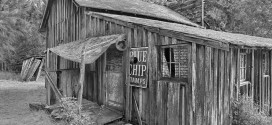It might have been the worst winter in a decade or more and no one doubts it impacted housing, but a new analysis by CoreLogic economists concludes there’s more to blame for the winter’s sorry numbers than the Polar Vortex,
Single-family housing starts, a closely watched indicator of housing market health, fell by 13 percent month over month in January 2014 on a seasonally adjusted basis, and held steady in February. The decline has been blamed in part on the severe weather conditions that have faced much of the U.S. as opposed to weakness in the housing sector, but if severe weather did influence the drop in starts, can all of the reduced building activity be blamed on the weather?
To assess the influence of cold weather on housing starts, CoreLogic analyzed temperature data from January 1984 to February 2014 and compared it to historical housing starts data. Because the question is whether or not the abnormally cold weather influenced building activity, we compared the temperature in a given calendar month to the average temperature for that calendar month for the 30-year time span. For example, the average temperature in the U.S. in February for all years was 35.3 degrees, and the U.S. temperature in February 2014 was 32.2 degrees, making February 2014 3.1 degrees colder than normal. While this year’s winter was colder than normal for the U.S. overall, when broken out by region, it is clear that some parts of the country experienced more severe temperatures than others. The Midwest region was hit particularly hard this winter, with temperatures in February at almost 10 degrees colder than average. The Northeast and South didn’t fare much better.
Starts Varied by Region
The housing starts data, much like the temperature data, shows very different levels of activity by region. The 13-percent decrease in January starts was not evenly distributed: Starts in the Midwest fell 55 percent, the South dropped 11 percent, the Northeast increased by 8 percent and starts in the West increased 11 percent. Since the western region had both above-average temperatures and a large increase in housing starts, can we conclude that colder-than-average temperatures caused the declines in other regions?
The seasonal adjustments used by the Census Bureau should account for the typical influence of cold weather on building activity by region. To test the hypothesis that colder-than-average temperatures reduced starts, CoreLogic ran a simple time series model to predict the monthly change in housing starts by region, with the added measure of colder-than-average winter temperatures.
The model results show that colder-than-average temperatures in winter months do have an impact on the monthly change in housing starts for the Midwest, Northeast, and South. Model results for the West were not conclusive. As expected, higher-than-average winter temperatures increased building activity and lower-than-average winter temperatures decreased housing starts. A temperature difference of one percent led to a 24-percent change in housing starts in the Midwest, a 31-percent change in the Northeast and a 21-percent change in the South.
Based on the model data, given the actual colder-than-average temperatures, the Midwest should have had a 6-percent decrease in housing starts in January and an 11-percent decrease in February. The Northeast should have had a 6-percent decrease in starts in January and a 5-percent decrease in February, and the South should have had a 2-percent decrease in January and a 1-percent decrease in starts in February.
More Than Weather at Work
While colder weather is a substantiated factor, clearly, the monthly change in housing starts is not entirely attributable to the colder-than-average temperatures. The 55-percent January decrease in housing starts in the Midwest cannot be completely attributed to the weather, but it is possible that the increase in February would have been bigger had the weather not been so cold. In the Northeast and South, the results are similar – colder-than-average temperatures don’t sufficiently explain the significant decline in housing starts.
Past severe winters that have negatively affected housing starts were followed by a rebound after temperatures began to rise again. This analysis indicates there should be a rebound again this spring, but it will not be sufficient enough to counteract the current weakness in the market that can’t be blamed on the weather.
 RealEstateEconomyWatch.com Insight and Intelligence on Residential Real Estate
RealEstateEconomyWatch.com Insight and Intelligence on Residential Real Estate

One comment
Pingback: AdSense Income Money Jobs